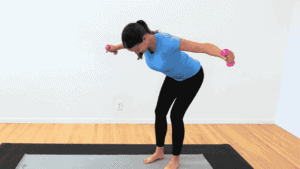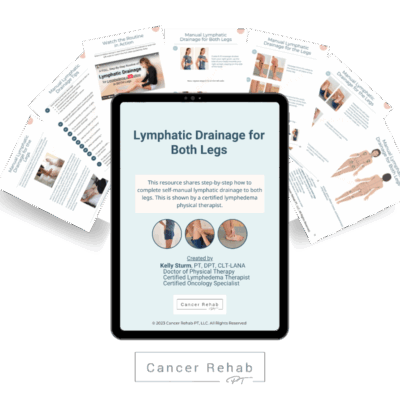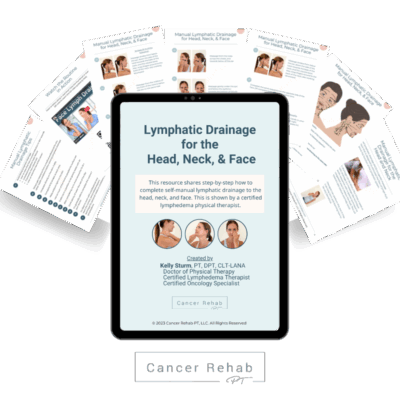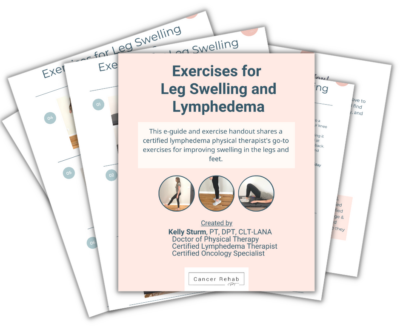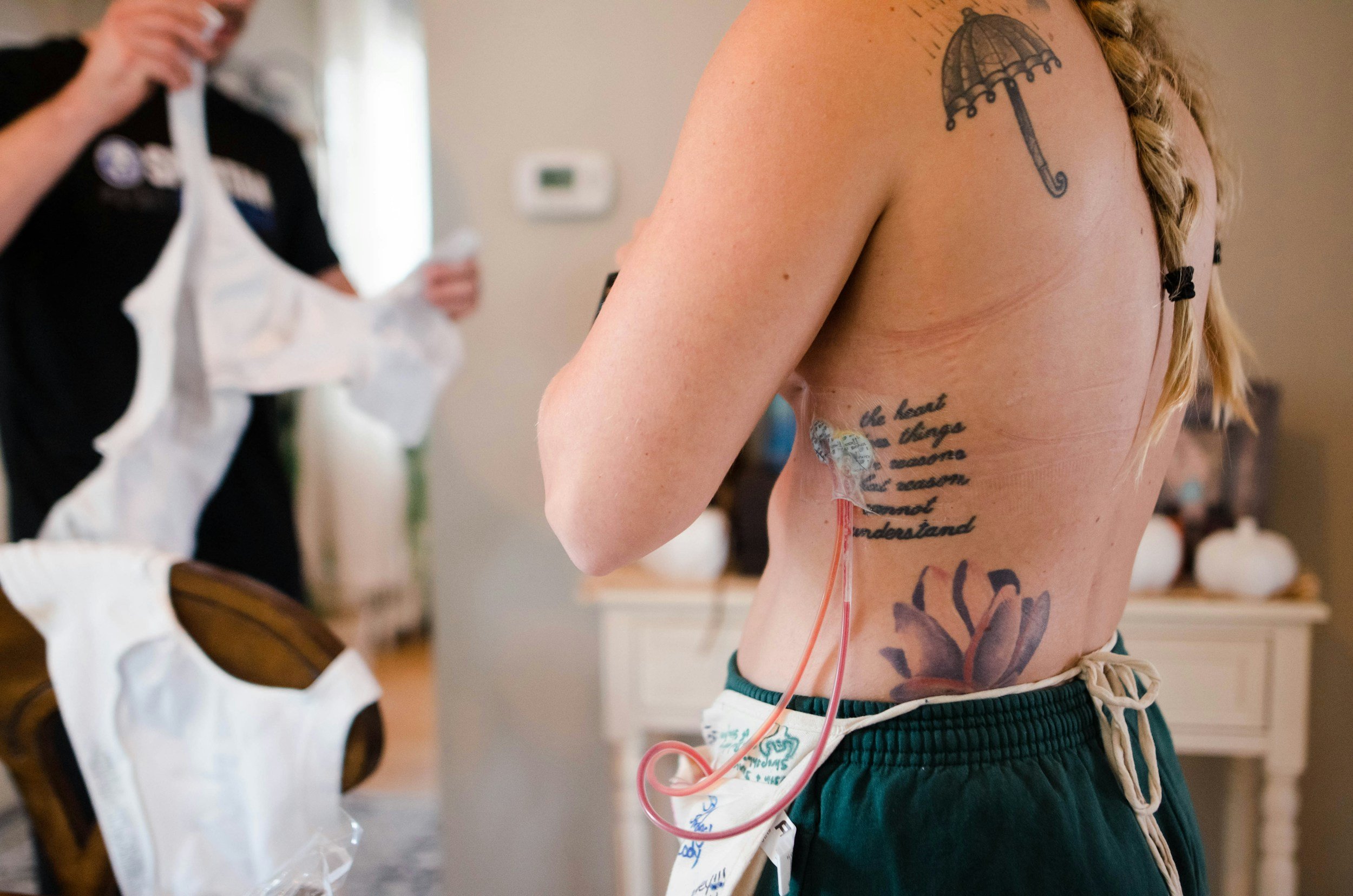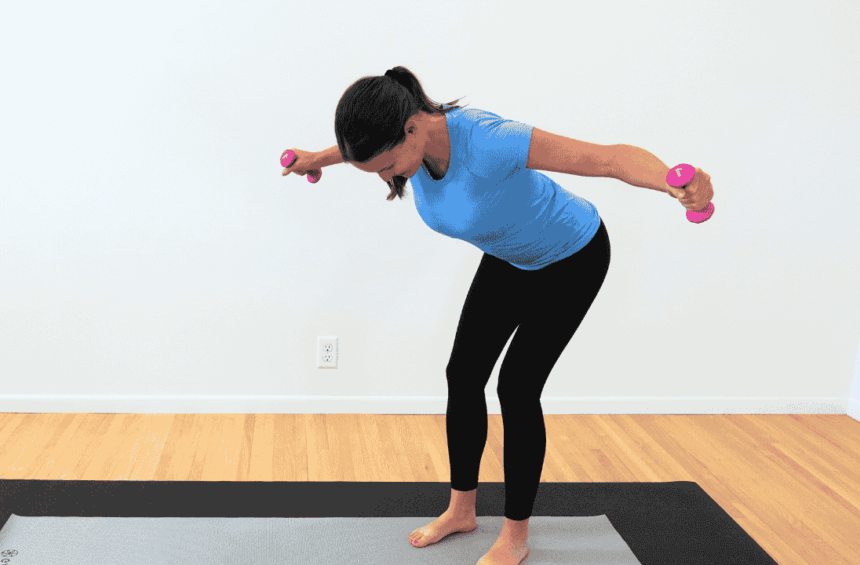A double mastectomy is a major surgery where both breasts are removed, either to treat breast cancer or to reduce the risk in women with genetic factors. Understanding the recovery timeline and what to expect can help you feel more prepared and confident as you approach your surgery.
Without breast reconstruction, most women need 3-8 weeks to recover. If you choose to have breast reconstruction during your surgery, recovery typically takes 6-12 weeks.
During this time, you’ll gradually regain strength and return to your daily activities, but your idea of “normal” may be different from what it was before the double mastectomy. You’ll likely feel different, but it’s fully possible to minimize discomfort, build up strength, and live a fulfilling life.
What Is a Double Mastectomy?
A double mastectomy, also called a bilateral mastectomy, removes both breasts during the same surgery. Your surgical team will work with you to determine which type of mastectomy best suits your medical needs:
- Total Mastectomy: In a total mastectomy, surgeons remove the entire breast, including the skin, areola, and nipple. This creates a flat chest wall and is often recommended when cancer is present in multiple areas or when cancer cells are found in the breast skin.
- Modified Radical Mastectomy: In a modified radical mastectomy, surgeons remove all breast tissue and some of the lymph nodes under your arm (but leave your chest muscles intact). This type of surgery may be recommended if cancer has spread to your lymph nodes or if there’s a high risk of lymph node involvement.
- Skin-Sparing Mastectomy: This surgical approach preserves most of your breast skin while removing the breast tissue, nipple, and areola. The preserved skin creates a natural envelope that can be used if you choose breast reconstruction surgery.
- Nipple-Sparing Mastectomy: During this procedure, surgeons keep your breast skin, nipple, and areola intact while removing the underlying breast tissue. This option may be available if you have smaller tumors located away from the nipple or are having preventive surgery.
What to Expect From Double Mastectomy Surgery
Once in the operating room, you’ll go under general anesthesia. During surgery, your surgeon will remove all visible breast tissue between your collarbone and ribs, from your sides to your breastbone.
Your surgeon may also perform a lymph node procedure, removing either a few key nodes (sentinel lymph node dissection) or several nodes (axillary lymph node dissection) to check if the cancer has spread. These nodes are examined during surgery, and if cancer cells are found, more nodes may need to be removed.
The breast surgery takes 1-3 hours without reconstruction, or longer if you’re having immediate reconstruction.
If you choose immediate reconstruction, your plastic surgeon will perform this during the same surgery using implants, tissue expanders, or your own tissue. Without reconstruction, your surgeon will create a flat closure of your chest wall.
When your breast cancer surgery is complete, you’ll have at least one drain on each side of your chest. These drains serve an important purpose – they remove fluid that naturally collects under your skin after breast tissue is removed. Your surgical team will show you how to care for these drains during your recovery.
What to Expect from Double Mastectomy Recovery
After surgery, you’ll be transferred to a recovery room where your medical team will closely monitor your vital signs as you wake from anesthesia.
Depending on your procedure, you may be able to return home the same day. This is often possible if you had no lymph nodes removed or only sentinel lymph nodes removed, and no breast reconstruction surgery.
Some women stay in the hospital for 1-3 days after the surgery. If you had reconstruction using tissue flaps, your stay might extend to 2-5 days.
Before leaving the hospital, your care team will provide detailed instructions for your at-home recovery. They’ll teach you how to:
- Monitor your surgical drains and record the fluid output
- Care for your incision sites and change bandages
- Recognize signs of infection, such as increased redness, warmth, swelling, or fever
- Manage your pain with prescribed medications
- Practice gentle arm exercises to maintain mobility
- Know when to contact your healthcare team
What Is the Recovery Time for a Double Mastectomy?
Recovery time varies for each person and depends on whether or not you also had a breast reconstruction surgery.
A mastectomy without reconstruction typically allows women to return to their daily activities within 3-8 weeks.
During the first few weeks, you’ll gradually regain arm movement and strength. Your surgical drains typically remain in place for 1-2 weeks, and your doctor will remove them once fluid output decreases to a specific level.
Many women feel tired and sore for several weeks after surgery. This is normal – your body needs time to heal. While you may feel ready to return to some activities sooner, it’s important to follow your surgeon’s guidelines about lifting restrictions and exercise limitations.
Learn more about breast cancer rehabilitation.
Recovery Time for a Double Mastectomy with Immediate Reconstruction
If you’ve had immediate reconstruction, recovery typically takes 6-12 weeks. The timeline depends on the type of reconstruction you choose.
With implants or tissue expanders, initial recovery takes about 6 weeks. If you have tissue expanders, you’ll visit your surgeon regularly over several months for expansion procedures to gradually stretch your chest tissue to prepare for permanent implants.
For tissue flap reconstruction, recovery may take 8 weeks or longer. This procedure is more complex because it involves surgery at both the breast site and the area where tissue was taken (usually the abdomen or back). You’ll need additional time to heal at both surgical sites.
Try these stretches after breast cancer surgery or radiation to improve your range of motion.
Mastectomy Recovery At Home
Creating a comfortable recovery space at home helps ease your healing process. Position pillows where you can easily reach them for support, and keep necessary items like water, medications, and your phone within arm’s reach.
During your first few weeks at home:
- Take your pain medication as prescribed
- Get plenty of rest, but take short walks to maintain blood flow
- Wear loose, comfortable clothing that opens in front
- Accept help from family and friends with daily tasks
- Follow your surgeon’s guidelines about showering and wound care
- Attend all follow-up appointments
- Join a support group if you’d like to connect with others who understand your experience
- Learn how to care for mastectomy scars
Your healthcare team will guide you on when to begin wearing a bra after surgery. Initially, you might need to wear a special post-surgical compression bra. Once your incisions have healed, you can explore different bra options based on your needs. Here are some products I use and trust.
If you haven’t had reconstruction, you might choose to wear a soft leisure bra, a bra with prosthesis pockets, or no bra at all. Many women find that front-closing bras are easier to manage during recovery because they don’t require reaching behind your back.
What to Avoid After a Double Mastectomy
You’ll need to avoid certain activities for a few weeks after a mastectomy to help your body heal properly and prevent complications. Here’s what you can expect.
- No heavy lifting: Keep yourself from lifting heavy objects until your drains are removed. This includes groceries, laundry baskets, small children, and pets. Your body needs time to heal, and heavy lifting can strain your surgical site and disrupt the healing process.
- Avoid raising your arms above shoulder level: Raising your arms too high can displace surgical drains or affect tissue expanders if you’ve had reconstruction. Follow your surgical team’s specific guidelines about safe arm movements and exercises.
- Don’t drive: Wait for clearance from your surgeon before getting behind the wheel. This usually happens after your drains are removed and you’ve stopped taking prescription pain medication.
- No swimming and baths: Until your incisions have completely healed, stick to showers only. When showering, let water flow gently over your surgical site and pat the area dry with a clean towel.
- Avoid sleeping on your surgical side: Sleep on your back or unaffected side to prevent pressure on your surgical area and ensure proper healing.
- Don’t wear restrictive clothing: Stay away from underwire bras or tight clothing that could irritate your surgical sites. Your healthcare team will guide you on appropriate post-surgery garments.
In Breast Cancer Rehab, you can find education and support on common problems that women experience after a double mastectomy, such as arm mobility, scar tissue pain, and breast swelling. It also explains how to lower your chances of developing lymphedema after breast cancer.
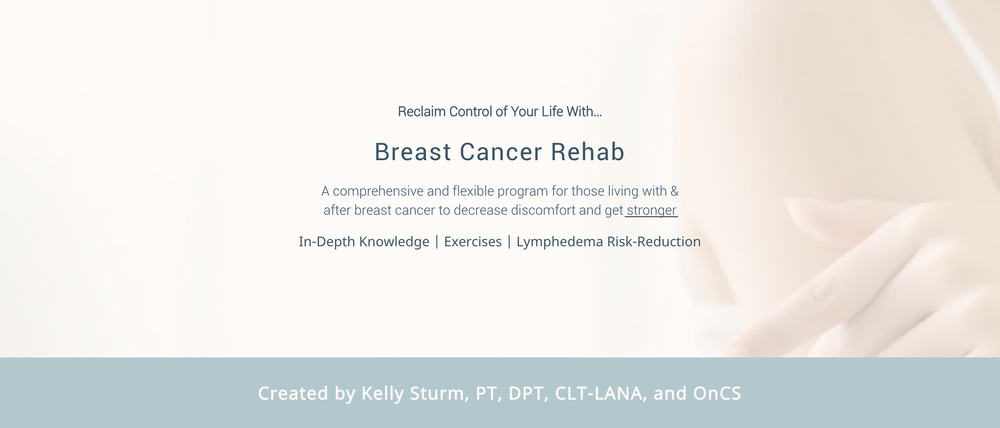
Exercise After a Double Mastectomy
Physical therapy is an essential part of breast cancer recovery. It helps you regain strength and mobility safely, as well as prevent potential complications, including lymphedema.
If you have access to a physical therapist, take advantage of it. They’ll guide you through a rehab program to regain your full range of motion in your shoulders and arms and strengthen the muscles weakened by surgery.
If you don’t have access to a physical therapist or want to supplement your program for faster recovery, I have several resources that can be helpful:
- Breast Cancer Rehab: In-depth, comprehensive, and accessible program to help you minimize discomfort and maximize strength after breast cancer. There are also resources on hormone therapy, cancer-related fatigue, and other issues that many people living after breast cancer deal with.
- Exercise Guides: Step-by-step exercises, such as early exercises for breast cancer when drains are still in place, beginner stretches for breast cancer recovery, and beginner strength exercises.
- YouTube: I have hundreds of videos on YouTube, sharing exercises and educational material on breast cancer recovery. I’m going to share a few videos that you can get started with below!
Living a full, fulfilling life after breast cancer is possible. Uncomfortable symptoms like pain, tightness, and fatigue are common, but they don’t have to become your new normal.
Physical therapy can help you build up strength and get your life back, so I encourage you to explore the different resources I shared above!
Lowering Your Risk of Lymphedema After a Double Mastectomy
Lymphedema is a potential complication after breast cancer surgery that causes swelling in the arms, hands, or chest wall. It occurs when lymph nodes are removed or damaged during surgery. This affects your body’s ability to drain lymph fluid properly and can eventually lead to lymphedema.
Understanding your risk factors and taking proactive steps to minimize your likelihood of developing lymphedema can make a huge difference. Maintaining a healthy weight and keeping your skin clean and moisturized to prevent cracks or cuts that could lead to infection is very important.
Physical therapy is essential, too. Certain exercises promote lymph flow and make it easier for your lymphatic system to do its job properly.
Watch for early warning signs of lymphedema, which include:
- A heavy or tight feeling in your arm
- Difficulty fitting into sleeves or wearing jewelry
- Skin feeling tight or less flexible
- Reduced movement in your hand, wrist, or arm
- Visible swelling, especially at the end of the day
- Rings, watches, or bracelets feeling tighter than usual
- Small indentations left by clothing or jewelry
Catching these signs early can help you minimize swelling and stop it from getting worse.
Lymphedema is a chronic condition, but early detection and treatment may sometimes even reverse the initial swelling. You can find a lot of lymphedema-related information in Breast Cancer Rehab.
FAQs
How painful is recovery from a double mastectomy?
During surgery, your surgeon injects long-lasting numbing medication into the surrounding tissues, which helps manage initial post-operative discomfort. You may feel pressure or tightness in your chest, especially if you’ve had reconstruction with implants or tissue expanders, but severe pain is uncommon. You can typically use over-the-counter pain medications like acetaminophen or ibuprofen to manage the discomfort.
Over the few weeks after your double mastectomy, you may start to experience more pain and discomfort as your body heals. You might notice shooting pains, tingling sensations, or areas of numbness around your chest and arms. These pain symptoms are common during recovery, but don’t dismiss them as something you have to “just live with.” Physical therapy can help you manage daily activities with less discomfort, and manual therapy techniques are great for minimizing scar tissue formation.
How long are you on bed rest after a mastectomy?
You’ll need plenty of rest in the first few days after your double mastectomy, but adding in some light movement can speed up your recovery time. You can start with gentle stretches or very short walks to promote healing and maintain muscle strength.
How long do you stay in hospital after a double mastectomy?
It depends on your specific double mastectomy procedure. If you had a mastectomy without reconstruction, you might go home the same day or stay just one night. With immediate reconstruction using implants or tissue expanders, expect to stay 1-3 days. For more complex reconstructive procedures using your own tissue (flap surgery), you may need to stay 2-5 days.
Is double mastectomy a major surgery?
Yes, a double mastectomy is considered major surgery, but it’s a well-established procedure with predictable outcomes. Modern surgical techniques have made it safer and more precise than ever before. Most women recover well with proper support and care.
Get More Support in Breast Cancer Rehab
Educating yourself on what to expect from double mastectomy recovery time can make you feel more confident and allow you to get back to your daily activities sooner.
Most women need 3 to 4 weeks to recover (6 to 8 weeks if you had a breast reconstruction). The hospital stay is typically short, but you’ll do more extensive mastectomy recovery at home – including physical therapy.
You can find extensive education and physical therapy exercises in Breast Cancer Rehab to help you minimize discomfort and reduce lymphedema risk.

